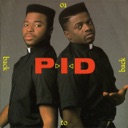Holy Hip-Hop/Christian Rap
Gospel artist Kirk Franklin performs at the Warner Theatre in Washington, DC, 2016
© Kyle Gustafson/ZUMA Wire/Alamy Live NewsKey Attributes of Holy Hip-Hop/Christian Rap
Select to filter timelineThemes
- Religion/Faith
Musical Features
- Sampling
- Beat
Instruments
- Electric Piano/Synthesizer
- Guitar
- Horn
- Other Electronic Instruments
Holy hip-hop is as diverse as its secular counterpart, displaying stylistic features associated with the East Coast, West Coast, and Southern regions of the United States.
The popularity of hip-hop among African American youth inspired new sounds in Black religious music that came to be known as Christian rap and, later, holy hip-hop. (Initially, it was called gospel rap and gospel hip-hop, and is also known under the monikers Christ-hop and Christian hip-hop). Emerging in the mid-1980s, holy hip-hop refers to a musical genre and cultural movement that integrates Christianity and hip-hop. Created as an alternative to lyrics that were often viewed as violent, misogynistic, and pro–drug use (particularly the subgenre known as gangsta), this genre combines the music, language, rap, and fashion from hip-hop culture with inspirational and Christian themes and lyrics.
Context and History
The first holy hip-hop artists came of age during the geopolitical and economic shifts of the post–civil rights years and comprise what many refer to as the “Hip-Hop Generation.” As this diverse subculture of predominantly Black youth explored and converted to Christianity, they in turn brought hip-hop worldviews and aesthetics to their worship practices. While Islam—and in particular, the Five Percent Nation—has historically been the most prominent religious ingredient in hip-hop’s diverse religious stock, explicit references to Christianity found a home in the steadily growing culture of holy hip-hop during the mid-1980s as secular hip-hop began to migrate from the fringe of American popular music into the mainstream.
The first commercially released and distributed Christian rap record was Queens, New York MC McSweet’s 1982 album The Gospel Beat: Jesus-Christ, recorded on Lection Records of Polygram. That said, Stephen Wiley’s 1985 release Bible Break has been celebrated by many holy hip-hop artists as the first gospel rap album, including California Christian rapper T-Bone in his song “Our History” on the album GospelAlphaMegaFunkyBoogieDiscoMusic (2002). Hailing from Oklahoma, Wiley’s message included select stories from the Old and New Testaments of the Bible supported by up-tempo beats inspired by current R&B music. While the title track of the album reached the No. 14 spot on Christian radio in 1986, many gospel rappers have called his style “soft” and lacking in a street sensibility that has been central to hip-hop.
Several Christian-themed hip-hop albums followed Bible Break, including New York’s Michael Peace with Rrrock It Right (1987) and Dallas’s P.I.D. (Preachers in Disguise) in 1988 with their Run DMC–inspired street style and the addition of clergy collars. On the West Coast, Los Angeles–based group S.F.C. (Soldiers for Christ) self-produced the gospel rap album Fully Armed (1987). One of their first singles off the album, “Listen Up,” featured “old school” hip-hop drum machine and Casio sounds of the 1980s and contained a wide range of samples from the Philadelphia sound of Gamble and Huff to the theme song from Happy Days. Several prominent holy hip-hop acts emerged from the greater Los Angeles area including JC and the Boys, Gospel Gangstaz, L.A. Symphony, the Dynamic Twins, and I.D.O.L. King. These groups were wary of the Christian rap label, and intent on proving themselves first and foremost as skilled MC’s.
“I’m not a Christian rapper. I’m a rapper who’s a Christian. I was a rapper first and then I became born-again.”Soup the Chemist of S.F.C.
In 1989, multiracial Christian rap trio DC Talk released their self-titled debut album, becoming one of the most popular acts in Christian music and eventually exploring rock and pop sounds as well. In that same year, the late Danny “D-Boy” Rodriguez emerged on the scene with Plantin’ a Seed. Rodriguez was murdered a year later in Dallas, Texas, for unknown reasons. He saw rap music as a vehicle to reach inner-city youth in Dallas through the Street Church Academy, a ministry founded in the Buckner Terrace area of Dallas in 1983 by his parents. Prior to his death, he helped launch the career of his sister, Genie Rodriguez-Lopez, known as M.C. GeGee—the first signed female Christian rap artist—by collaborating on her first album, I’m for Real (1990).
MC Hammer was the first to make explicit references to Christianity in secular hip-hop with the tracks “Song of King” (1986) and “Pray” (1990), which reached the No. 4 position on the Billboard R&B charts. Doug E. Fresh’s “All the Way to Heaven” (1986) can also be considered among these early examples of spiritually informed hip-hop lyricism, although all three tracks were squarely planted in the commercial hip-hop market. When asked about his religious hip-hop songs, MC Hammer replied, “A long time ago, I made the commitment to dedicate at least one song per album to God. He has been very good to me, and never for one minute do I want him to think I’ve forgotten, because I haven’t.”
Christian symbols and themes continued to be invoked by hip-hop artists who do not consider their music to be “Christian rap,” most notably Tupac (“I Wonder If Heaven Got A Ghetto” and “Black Jesuz”), Nas (God’s Son) and DMX (“Lord Give Me a Sign”), and, more recently, Kanye West (“Jesus Walks” and Jesus is King), Chance the Rapper, and Kendrick Lamar. Other hip-hop artists have converted to Christianity and moved away from the secular hip-hop world, including Kurtis Blow, Reverend Run (of Run-DMC), and the late Bushwick Bill of the Geto Boys.
While more traditional adherents of Black Christian worship have expressed an aesthetic aversion to the “noise” and iconography of hip-hop, seeing it as an unorthodox presence in the church, certain Black pastors and church leaders began integrating hip-hop music and vernacular into their services in an effort to reach Black youth who were feeling increasingly alienated and estranged from Black Christianity. During the mid-1980s, at a time when many African American inner-city communities were plagued with an epidemic of illicit drugs that resulted in violent crime, Black youth became increasingly vulnerable to an array of social and economic forces, including unchecked police brutality, gang-related homicides, the HIV/AIDS crisis, mass incarceration, and increased generational poverty and urban decay. Black churches struggled to capture the attention of its youth and find viable solutions to the moral crisis that undermined their personal and spiritual development. By coupling the Christian message with their preferred music, ministries used hip-hop to teach biblical events, themes, and lessons to youth. The lyrics emphasized the performer’s relationship with Jesus Christ and the virtues of practicing a Christian lifestyle.
Church ministries in the early 1990s supported the efforts of local artists in the production of hip-hop inspired by a biblical message. This led to independent recordings of local groups, but it was Kirk Franklin who successfully fused elements from gospel (choir and instrumental stylings) with rapping, hip-hop beats, and samples from funk (“One Nation Under a Groove” by Funkadelic), as heard in “Stomp” (1997). This song opened up space for holy hip-hop as a distinctive style and musical genre within Black churches across the United States (although most holy hip-hop MCs would consider Kirk Franklin’s music to be gospel. Hip-hop ministries (housed within traditional churches) and free-standing hip-hop churches began to appear in the 1990s and early 2000s, most notably Kirk Franklin’s bi-weekly hip-hop “Take Over” service at Faithful Central Bible Church in Inglewood, California; the Crenshaw Christian Center’s “Hip-Hop Sundays” in Los Angeles; Kurtis Blow’s Hip-Hop Church in Harlem, New York; and the Crossover Church in Tampa, Florida; among others.
The emphasis on message rather than rapping techniques has led to holy hip-hop artists not being taken seriously outside of the church, but this changed in the first decades of the 21st century. More lyrically diverse and battle-oriented rappers began producing holy hip-hop music and record labels, such as Cross Movement and eventually Reach Records, and have made significant inroads into increasing the acceptability of holy hip-hop outside of the church and youth ministries. Although sufficiently below the radar of mainstream visibility, the holy hip-hop movement now boasts their own annual awards show, several national festivals and conferences, online music archives, a slew of hip-hop preachers, independent record labels, numerous radio programs, and hip-hop ministries and churches. The increasing number of FM, internet, and satellite gospel radio stations throughout the 1990s and early 2000s and the emergence of shows dedicated to gospel rap, such as the nationally syndicated Sunday morning broadcast, The Spirit of Hip-Hop, has been critical to exposing gospel music audiences to holy hip-hop. Categories for gospel music awards have been expanded to include Christian rap by the National Academy of the Recording Arts and Sciences (the Grammy Awards), the Stellar Awards, and the Gospel Music Association (GMA) Dove Awards.
The Christian rapper to receive the most mainstream attention has been Houston-born MC Lecrae. His skills as a rapper and high-quality production techniques earned him a Grammy for Best Gospel Album with his 2012 release, Gravity, as well as Best Artist of the Year at the 46th Dove Awards and Best Gospel Artist at the 2015 BET Awards. Lecrae’s awards (all won in religious categories) reveal that while gospel rap sonically registers as hip-hop, the audience it cultivates commercially is a religious one. Lecrae’s recent success, along with his 2015 performance of “Welcome to America” on The Tonight Show Starring Jimmy Fallon and 2016 performance at the BET Hip-Hop Awards, has brought unprecedented exposure to the subgenre. Lecrae’s success in mainstream hip-hop has led him and others to question the distinction between religious and secular hip-hop.
“There is no such thing as Christian rap and secular rap. Only people can become Christians. Music can’t accept Jesus into its heart.”Lecrae
Musical Features/Performance Style
As a musical practice used to articulate both a spiritual and social conception of self, holy hip-hop features biblically informed and Christ-centered lyrics over hard-hitting hip-hop beats. Squarely planted in the sound world of hip-hop, holy hip-hop is as diverse as its secular counterpart, displaying stylistic features associated with the East Coast, West Coast, and Southern regions of the United States. It has grown more sophisticated through the use of increasingly elaborate music production techniques such as sampling and remixing, and more complex rhyme schemes. Thus, there are specific sonic signifiers that distinguish holy hip-hop from secular rap. In some cases, holy hip-hop artists use the same beats and/or music producers as their secular counterparts. Although the music has changed, the mission of holy hip-hop remains consistent: to encourage young Christians and evangelize non-Christians. It is the lyrics—usually expressions of belief or personal testimony—that make holy hip-hop holy.
Lyrics
“Jesus Muzik” by Lecrae
People lookin’ all confused,
‘cuz every one of my tunes
is screamin’ Jesus peeps.
Historically, holy hip-hop artists have been Christians who use rap as a means to evangelize, teach, or encourage others. The emphasis on personal character and practicing Christian morals is of paramount importance within the holy hip-hop movement. Not all performers who record a religious or Christian rap song are considered holy hip-hop artists because the emphasis is on the body of work, the motivation, and the lifestyle, rather than one song. Aside from Lecrae, some of the most successful holy hip-hop artists are Ambassador, Da’ T.R.U.T.H., and Grits. The lyrics of “Who Am I?” (2007) by Da’ T.R.U.T.H. focus on the choices a person can make that align him or her either with biblical virtues or with worldly vices. Further, the song describes the difficulty the speaker has with making those choices and distinctions. The lyrics of “My Life Be Like” (2002) by Grits details how God helps a person move through difficult situations from a point of frustration to one of liberty and peace.
Lecrae, on his 2006 track “Jesus Muzik,” raps about the confused reactions he receives as he drives his pale-yellow convertible down the street blasting his Jesus beats: Then the hook, which features a “screw” technique of making the words super low in register and hyper-slow in delivery, drops in: “Ridin’ wit’ my top down listenin’ to this Jesus music.” Lecrae refers to the bewilderment that his music and his identity create for those witnessing him ride through the neighborhood “bumpin dese Jesus beats.” The song’s instrumentals, like most gospel hip-hop, sound just like any other commercial hip-hop track. Expecting to hear the profane language so common to gangsta rap and other forms of commercial hip-hop, passersby often do a double take upon hearing the religious message booming from his car speakers.
Bibliography
- Zanfagna, Christina. Holy Hip-Hop in the City of Angels. Berkeley: University of California Press, 2017.















